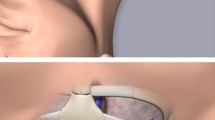Abstract
A vascular interface system has been designed to relieve the bedside staff in the critical-care environment of time-consuming and unreliable manual operations. The system has made it possible to link a computer-based data acquisition system directly to the patient and provides for automatic haemodynamic monitoring and therapy. The vascular interface system provides access to the patient's vascular sites primarily through pneumatically operated valve assemblies which are biologically (blood) compatible. All connections between catheter and measuring instruments are short, transparent tubes which are easily visible for observation. Operation of the system is simplified through the use of push-button controls with each control assigned a specific procedure (e.g. pressure monitoring, catheter flush and cardiac output). Special safety features built into the system, such as manual override of valve control, ensure continuing operation despite power failure. The existence of the vascular interface system now allows the distribution of blood to a variety of online satellite systems at the bedside. The use of automated equipment frees vital personnel from time-consuming procedures and allows them to return to the real task of observation and patient care.
Sommaire
Un système à jonction vasculaire a été conçu pour soulager le personnel des services intensifs et leur éviter des tâches longues et incertaines. Le système a rendu possible la liaison directe entre un système d'acquisition des données basé sur ordinateur, et le malade, et fournit automatiquement un traitement sous surveillance hémodynamique. Le système à jonction vasculaire permet d'accéder aux parois vasculaires du malade, grâce à des ensembles de soupapes, à commande pneumatique, qui sont biologiquement compatibles (sang). Toutes les connexions entre le cathéter et les instruments de mesure sont des petits tubes transparents facilitant l'observation. Le fonctionnement du système est simplifié par l'emploi de commandes par boutons-poussoirs, chaque commande étant attribuée à une procédure spécifique (par exemple: contrôle de la pression, lavage du cathéter, et sortie cardiaque). Quelques dispositifs spéciaux de sécurité, tel un rappel manuel de commande de soupapes, ont été ajoutés au système pour assurer un fonctionnement permanent, en cas de panne de courant. L'existence du système à jonction vasculaire permet maintenant la distribution du sang à différents systèmes satellites en ligne, au chevet des malades. L'emploi d'appareillage automatique libère le personnel essentiel de tâches longues, et leur permet de se consacrer à leur vraie tâche, qui est d'observer et de soigner les malades.
Zusammenfassung
Es wurde ein Gefäßkoppelsystem konstruiert, um dem Krankenhauspersonal auf den Wachstationen die zeitaufwendigen und unzuverlässigen manuellen Arbeiten zu erleichtern. Midiesem System wird ermöglicht, daß ein computerisiertes Daten-beschaffungssystem direkt an den Patienten angeschlossen wird und somit für automatische haemodynamische Beobachtung und Therapie sorgt. Das Gefäßkoppelsystem ermöglicht den Zugang zu den Gefäßstellen des Patienten in erster Linie durch eine pneumatisch betriebene Ventilanordnung, die biologisch (blut-) verträglich ist. Alle Verbindungen zwischen dem Katheter und den Meßinstrumenten sind kurze, durchsichtige Röhren, die zur Beobachtung gut sichtbar sind. Der Betrieb des Systems wird durch Steuerung durch Drucktasten, wobei jede Taste einen bestimmten Vorgang anzeigt (z.B. Druckbeobachtung, Katheterabzug, Herztätigkeit, etc.), erleichtert. In das System wurden spezielle Sicherheitsvorrichtungen wie z.B. Überfahren der Ventilsteuerung von Hand, Dauerbetrieb trotz Stromausfall, eingebaut. Durch das Gefäßkoppelsystem wird die Blutverteilung auf verschiedene, hintereinandergeschaltete Systeme am Krankenbett ermöglicht. Durch die Anwendung automatisierter Geräte wird das so wichtige Personal von zeitaufwendigen Arbeiten befreit und es wird ihnen ermöglicht, zu ihrer eigentlichen Aufgabe, der Beobachtung und Pflege der Patienten, zurückzukehren.
Similar content being viewed by others
References
Carrington, J. H., Weil, M. H., Shubin, H., Palley, N. andMartin, R. (1971) Physical arrangements at the bedside in support of automated systems for patient care.IEEE Trans. BME 18: 149–154.
Jensen, R. E., Shubin, H., Meagher, P. F. andWeil, M. H. (1966) Online computer monitoring the seriously ill patient.Med. & Biol. Eng. 4, 265–272.
Rockwell, M. A., Shubin, H., Weil, M. H. andMeagher, P. F. (1966) Shock III: A computer system as an aid in the management of critically ill patients.Comm. ACM 9, 355–357.
Rystrøm, L. A. (1970) An automated tubing and valve system for monitoring of intravascular pressures, cardiac output and other parameters. Proceedings of the First Nordic Meeting on Medical Biological Engineering, Otaniemi, Finland.
Shubin, H. andWeil, M. H. (1966) Efficient monitoring with a digital computer of cardiovascular function in seriously ill patients.Ann. Intern. Med.,65, 453–460.
Shubin, H., Weil, M. H. andRockwell, M. A. (1967) Automated measurement of cardiac output in patients by use of a digital computer.Med. & Biol. Eng.,5, 353–360.
Shubin, H., Weil, M. H. andRockwell, M. A. (1967) Automated measurement of arterial pressure in patients by use of a digital computer.Med. & Biol. Eng.,5, 361–369.
Stewart, D. H., Erbeck, D. E. andShubin, H. (1968) A computer system for real-time monitoring and management of the critically ill. AFIPS Conference Proceedings,33, 797–801.
Weil, M. H. andShubin, H. (1969) The ‘VIP’ approach to the bedside management of shock.J. Am. Med. Assoc.,207, 337–340.
Weil, M. H., Shubin, H. andRand, W. M. (1966) Experience with a digital computer for study and improved management of the critically ill.,198, 147–152.
Weil, M. H., Shubin, H. andRossoff, L. (1965) Fluid repletion in circulatory shock.,192, 668–674.
Author information
Authors and Affiliations
Rights and permissions
About this article
Cite this article
Bisera, J., Weil, M.H., Carrington, J.H. et al. Vascular interface system for automation of haemodynamic monitoring and therapy. Med. Biol. Eng. Comput. 16, 278–284 (1978). https://doi.org/10.1007/BF02442428
Received:
Issue Date:
DOI: https://doi.org/10.1007/BF02442428




